Sitting between Phrathat Kham Kaen (7.5km away) and the King Cobra Village (12km), two of Khon Kaen’s most popular tourist destinations, you’d expect Ku Prapha Chai (กู่ประภาชัย) to attract a fair number of visitors, but you will usually have this small Khmer ruin all to yourself.
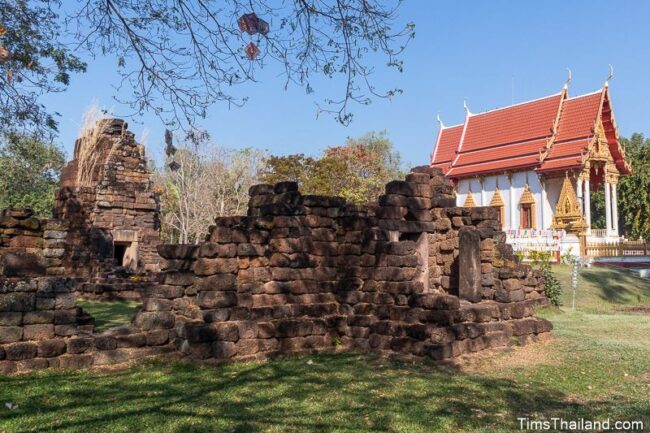
Made mostly of laterite, Ku Prapha Chai was built by King Jayavarman VII (r. 1182-1219) as a temple for one of the 102 arogayasala (hospitals) he commissioned across the Khmer empire. It faces east and fully follows the standard arogayasala design.
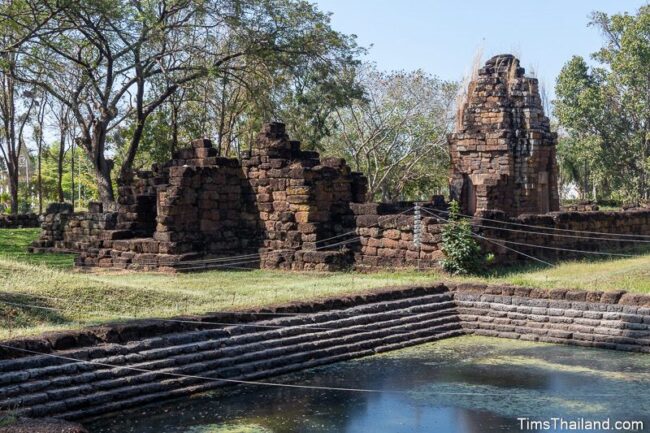
Ku Prapha Chai is surrounded by a 25m x 35m laterite outer wall with an eastern gopura. There is no roofing left, but the gopura‘s walls, doorways, and three small side rooms are fairly complete. Locals have made a shortcut entrance in the wall alongside the gopura, making it easier for the elderly to enter and make offerings.
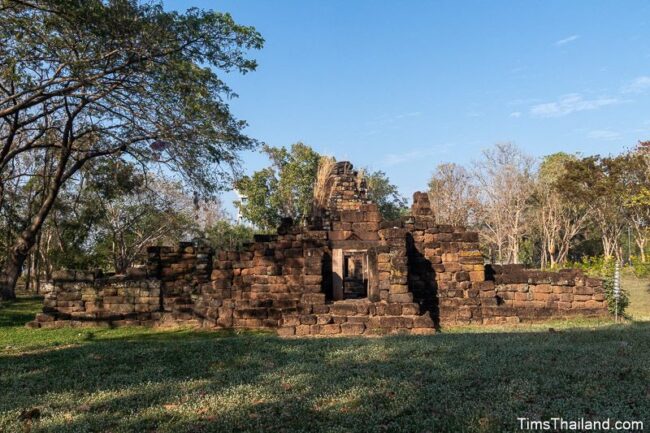
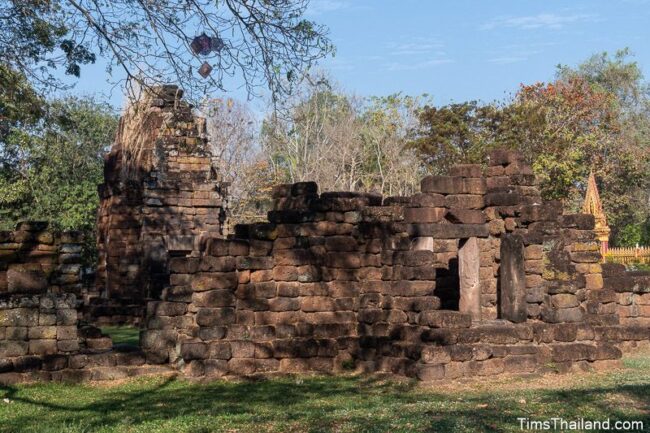
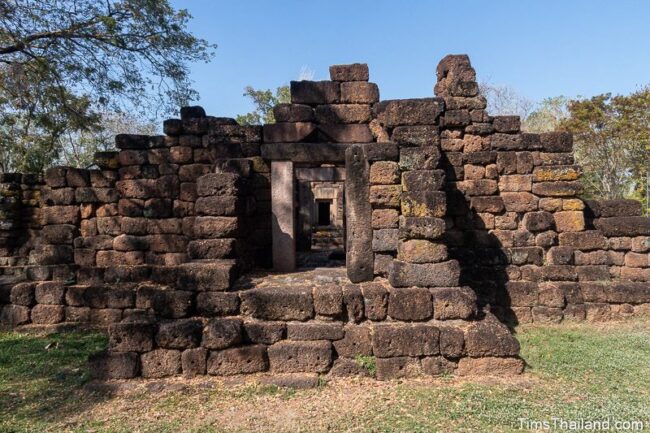
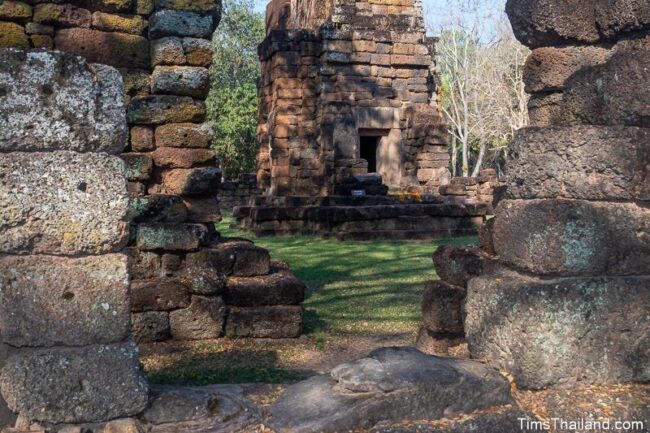
In the floor of the gopura‘s rather large main chamber is a foundation stone for holding the offerings (including gems and gold leaf) given to the gods when building the temple. Though these were a standard features of Khmer temples, they’re seldom seen in present-day ruins. The small square pedestal inside the hole now is a replica; the original is in the museum.
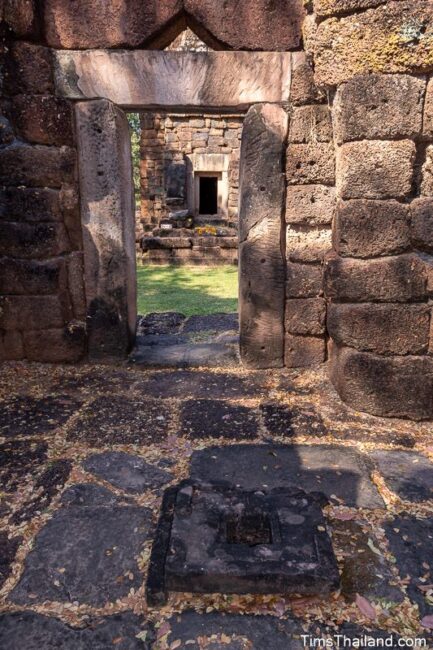
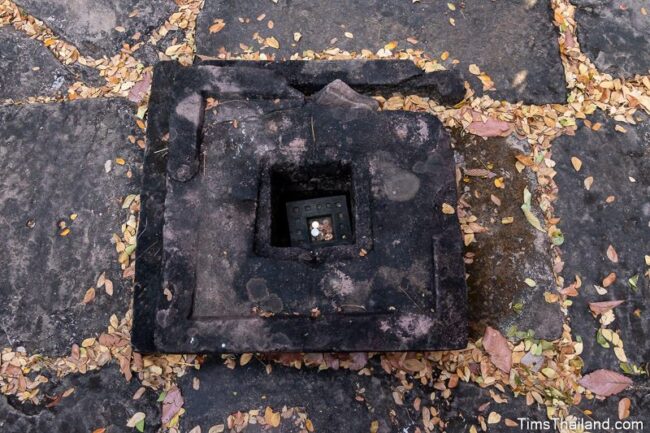
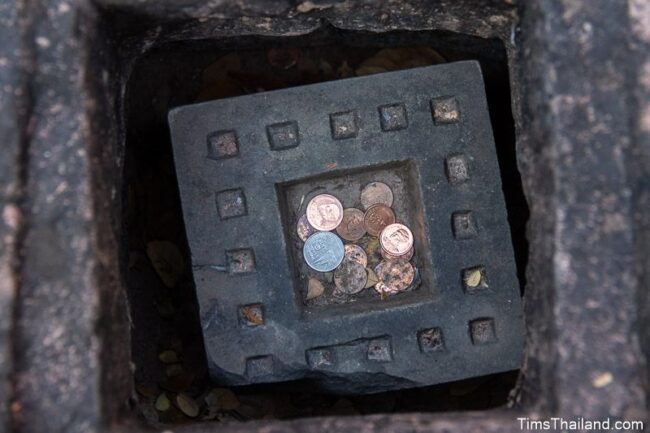
The grass-topped prang is largely intact, although part of the vestibule in front has toppled. There is, though, enough left to show that there was once a window on the south side and a solid wall on the north. There are no lintels or other carvings around the doorframes (no carvings were done on the other buildings either) though the usual lotus-bud is in place at the top. The entrance is to the east and there are false doors on the other three sides.
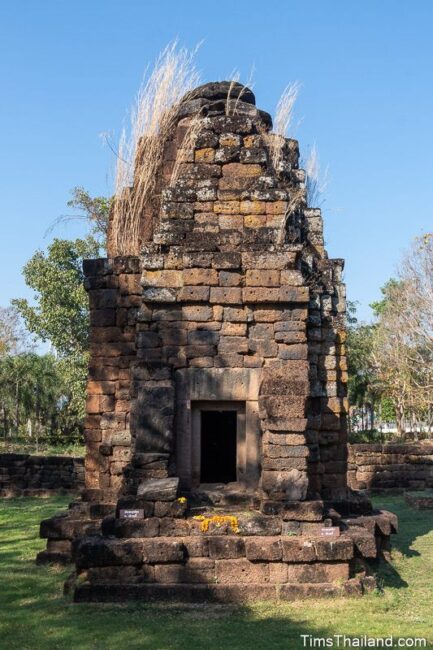
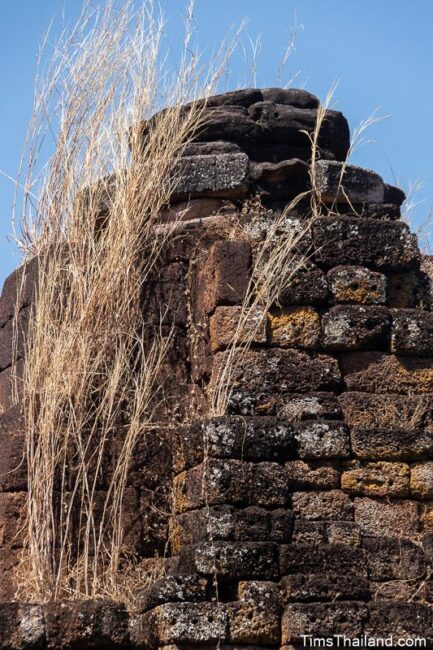
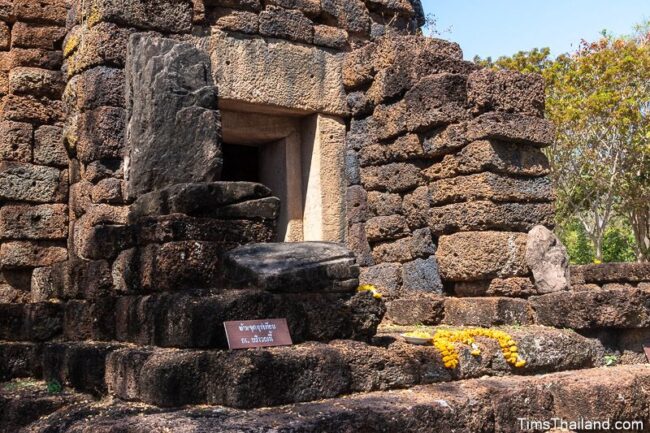
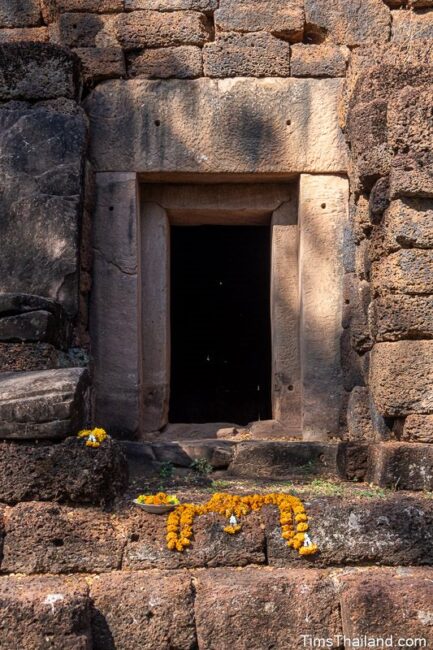
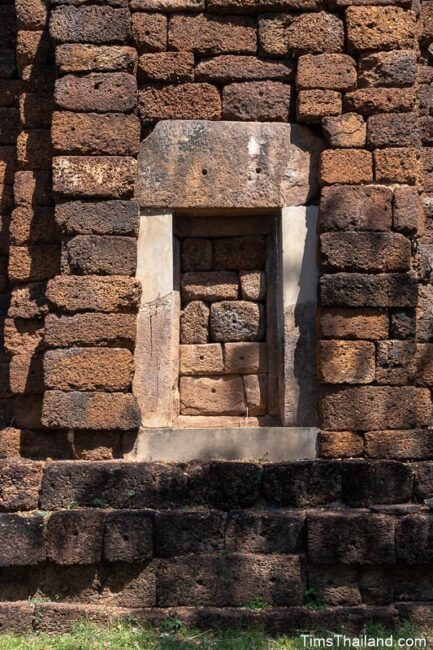
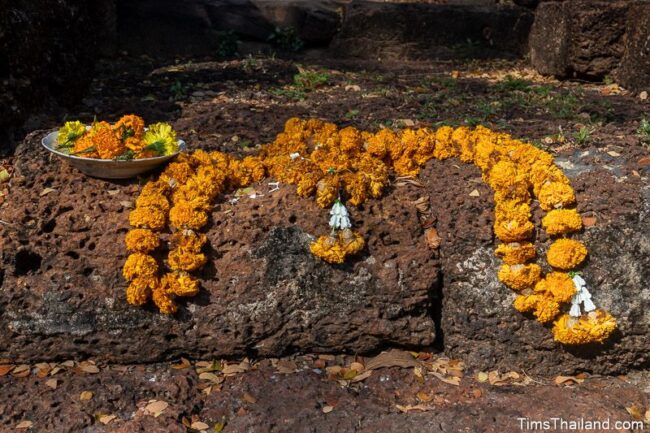
Inside the prang is an original pedestal, though whatever sculpture it held is gone. It’s now part of a simple shrine with a small clay Buddha.
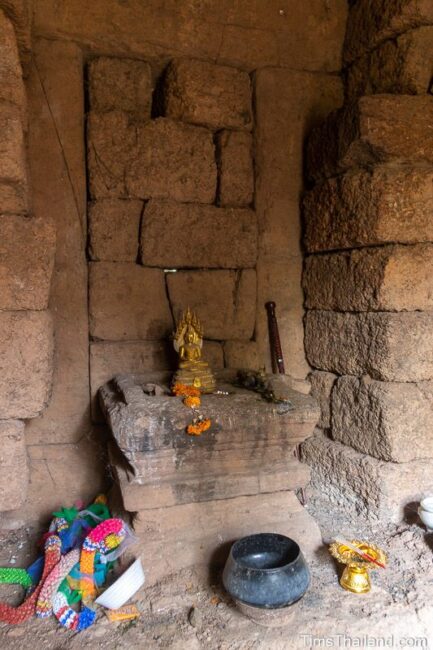
To the southeast of the prang is what’s left of the double-doored bannalai, with no roof and about half the walls.
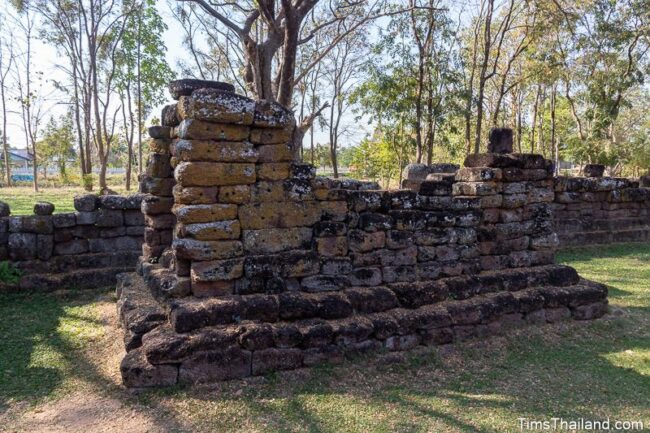
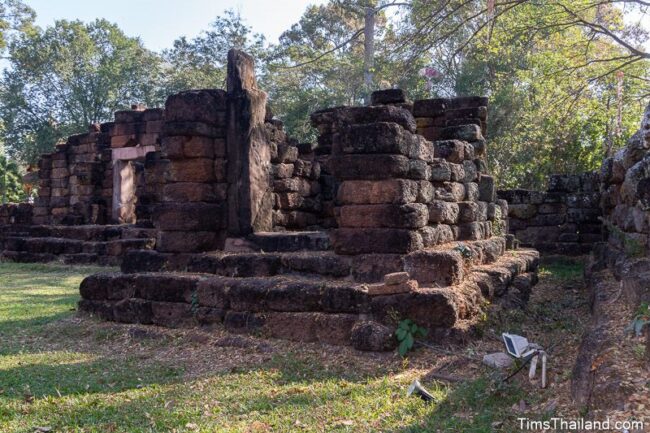
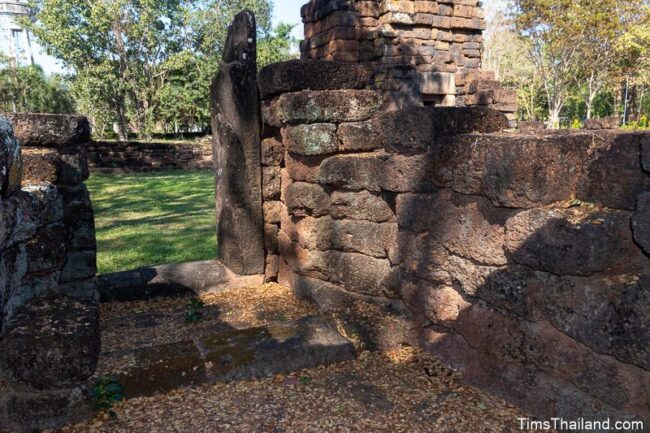
Behind the prang, in the northwest corner, is the small base of an old, but not Khmer-era (Lan Chang, presumably), stupa.
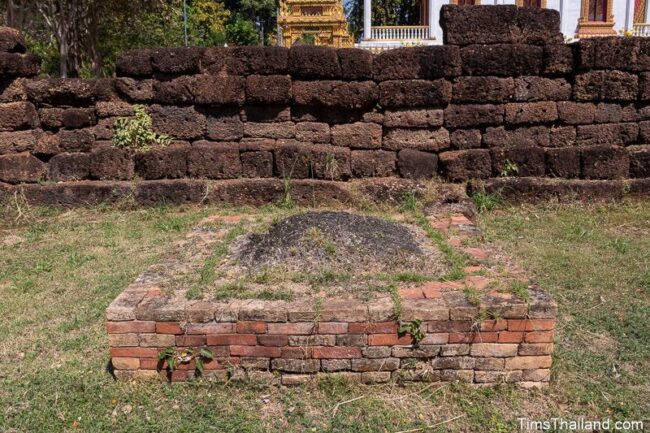
Outside to the northeast is a sacred pond lined with laterite steps. Used during the Khmer times for healing rituals, locals still consider the water to be holy. Ku Prapha Chai is on the grounds of a modern Thai temple and the pond’s water is used during the temple’s annual Songkran celebration to bless Buddhas, monks, and people over age 60. This holy water was also used during the coronation of King Rama 10 and during several ceremonies for King Rama 9.
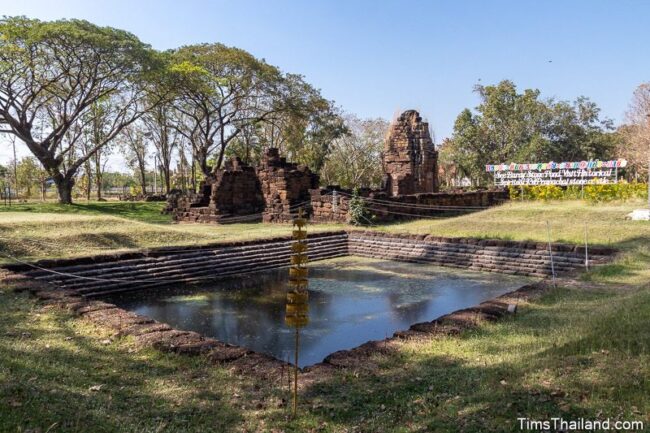
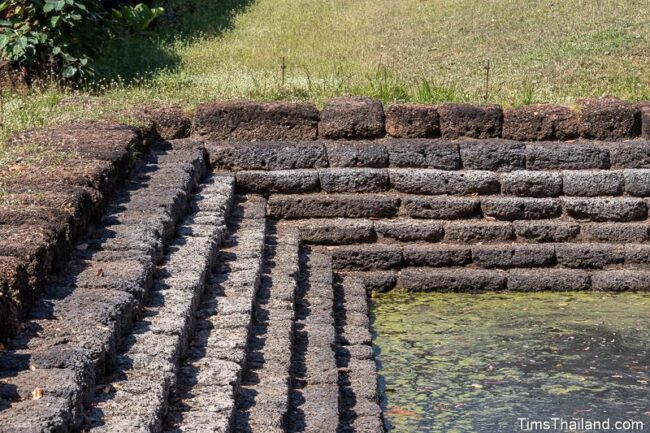
South of the temple is a pile of excess stone (mostly laterite, but also a little sandstone) not used during the restoration, and south of that is the half of the old moat that remains. The moat has been expanded in present times; the outer edge now follows the path of the road, not the layout of the temple.
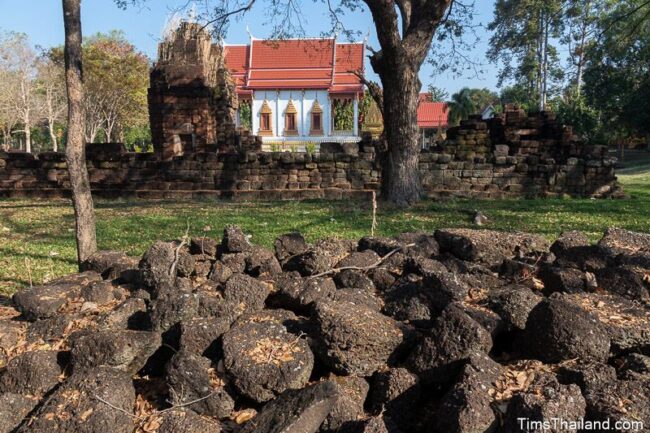
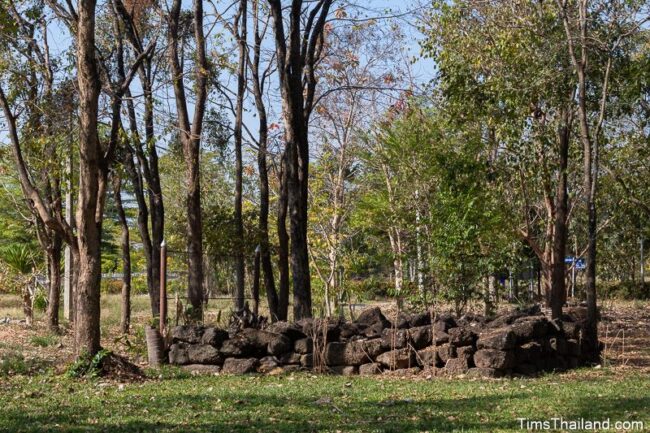
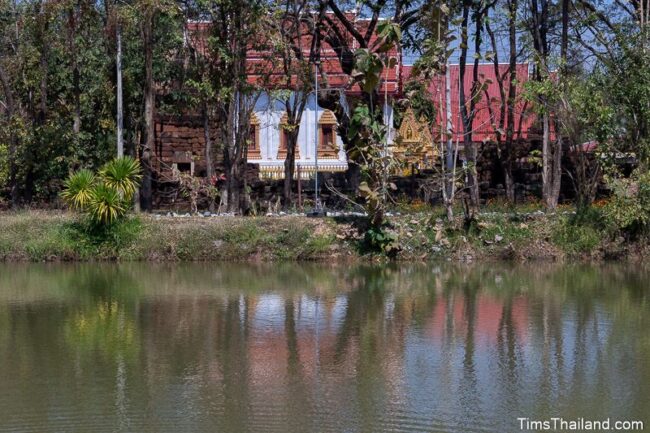
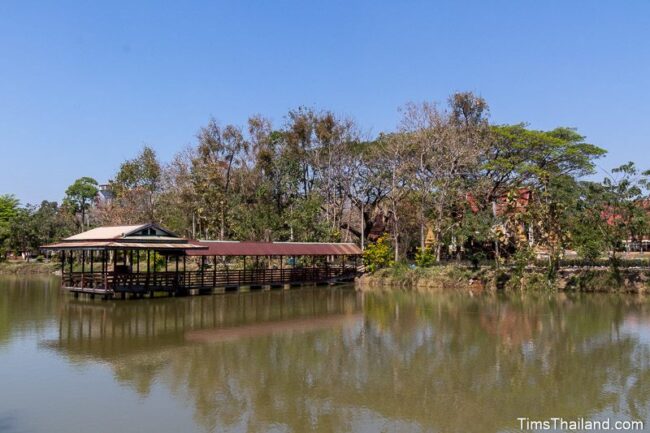
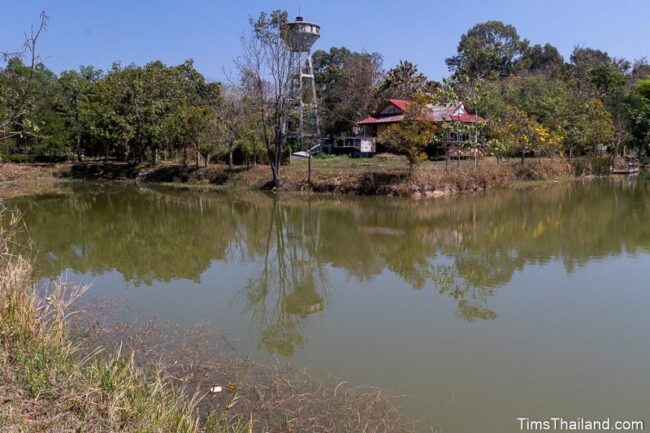
What is assumed to be the former baray for the Khmer village that supported the temple is 400m to the east, and its water still serves the present village. There is a large shrine complex honoring many local gods at the northwest corner.
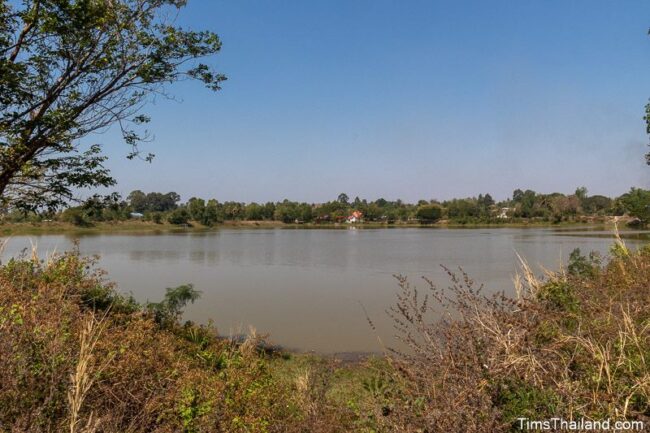
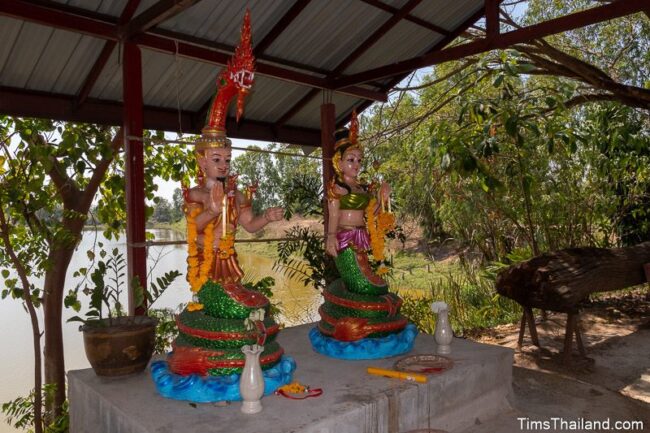
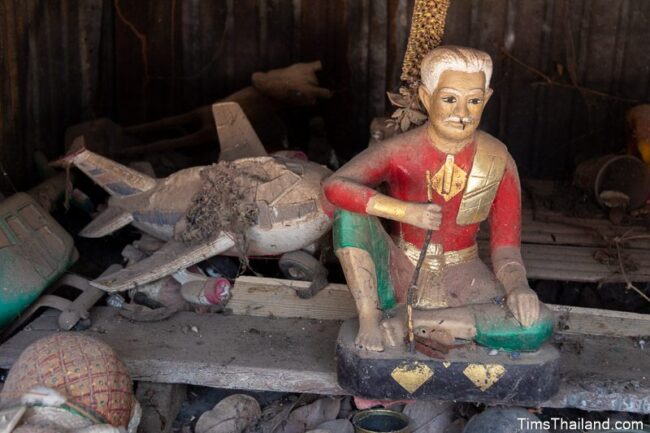
Ku Prapha Chai Local Learning Center
The Fine Arts Department’s restoration and excavation of Ku Prapha Chai took place from 1998 to 2000 and hundreds of artefacts, from pottery shards to sculptures, were unearthed. The local community takes great pride in this site and at their insistence the small Ku Prapha Chai Local Learning Center (พิพิธภัณฑ์ท้องถิ่นแหล่งเรียนรู้กู่ประภาชัย) was later built here to display some of them. Signage is in Thai only.
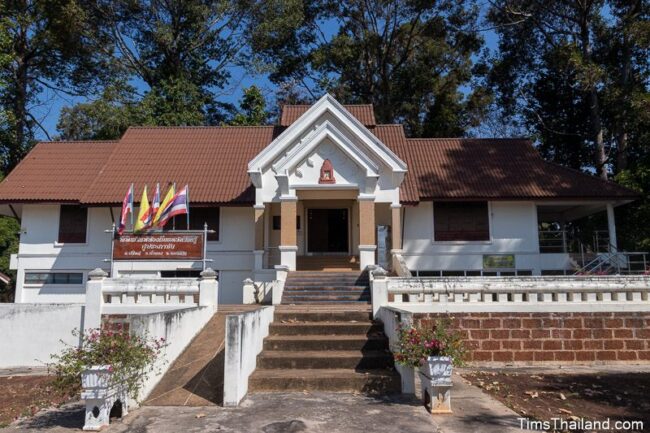
Besides the Khmer things (such as the original dedication pedestal along with the gems and gold leaf found with it; a head and a hand of Bhaisajyaguru, the Medicine Buddha; a tiny pot; and metal bars used in the construction of the temple) found at Ku Prapha Chai, the main room also has some Lan Chang-era Buddhas recovered here and a few Khmer items found in the vicinity of the village and donated to the temple, including a rough but revered Ganesh statue found in a rice field.
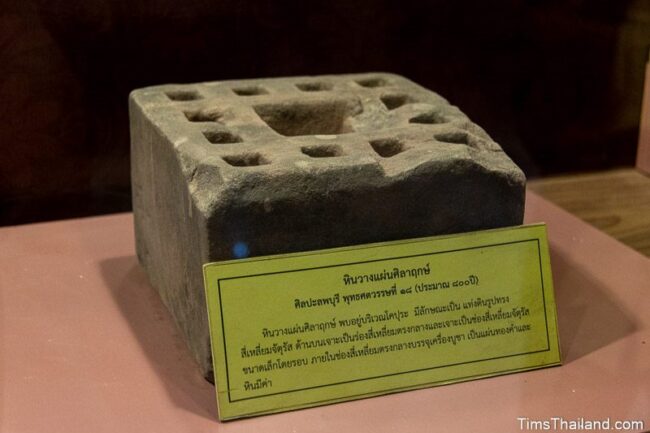
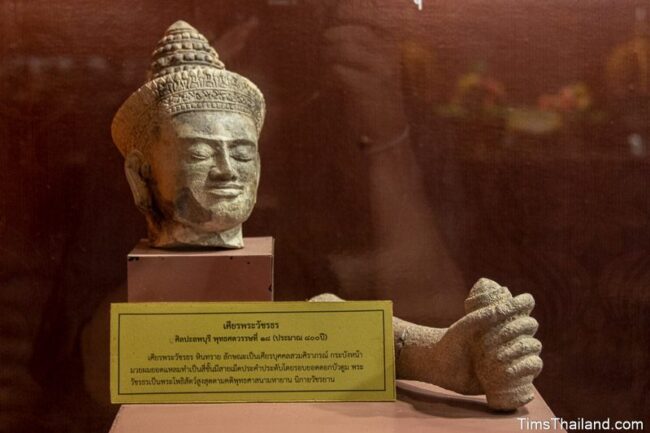
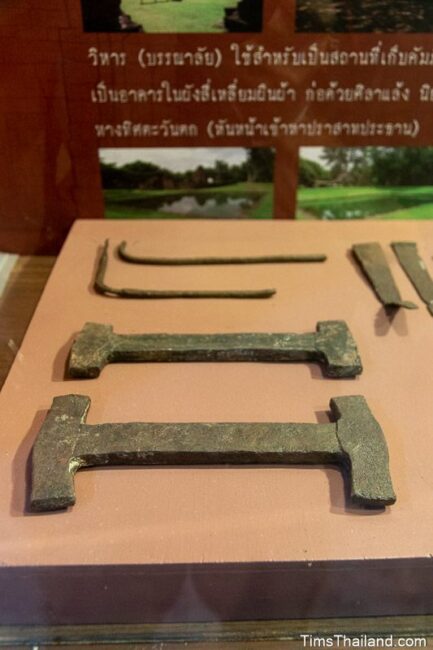
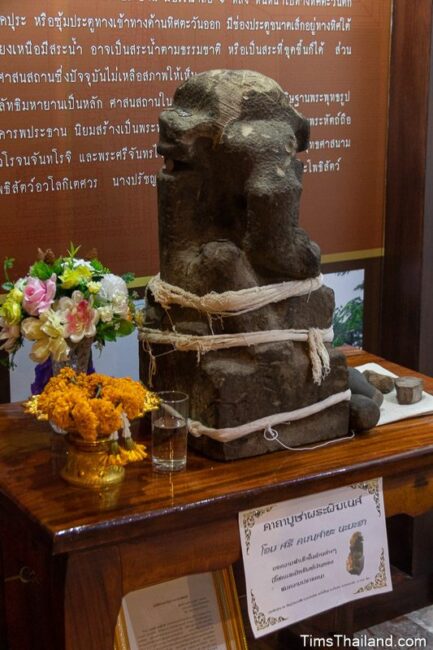
Also in the museum is a heritage room with animal traps, silk-weaving equipment, farming tools, and other objects showing the Isan village lifestyle of the past, and a mini hall of fame of important village leaders.
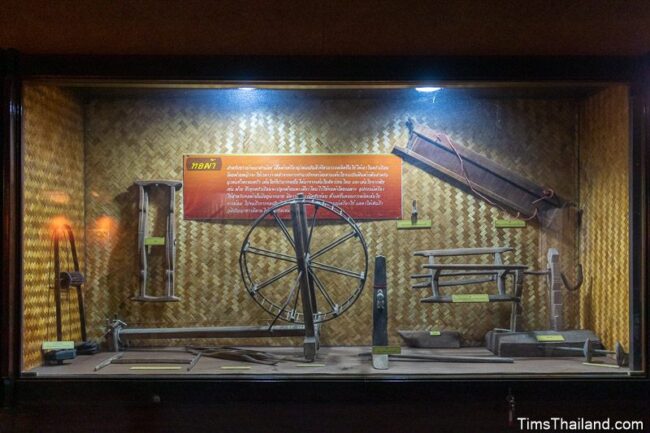
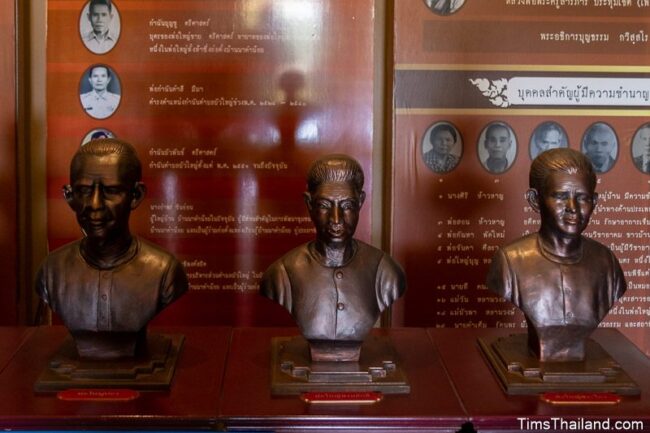
The brown and gold shrine near the sacred pond was built for the “Million Rock” (หินก้อนล้าน), a long, rough, uncarved slab of sandstone found in a tree and brought to the temple in 1947. For a while it was kept inside the enclosure next to the bannalai. One night after seeing a glowing light from inside the temple, locals decided there must be a powerful spirit living inside it and they believed it can cure illnesses so they built a shrine for it. An odd village legend says that in 1970 a foreigner came to the village looking to buy ancient items and offered 1,500,000 baht for this stone. Wanting to use the money (equal to about US$72,000 at the time and some half a million dollars in today’s value) to develop the temple, the village agreed; but soon after this an ancient tudong monk appeared to the temple’s abbot in a dream and told him not to sell it. The Khmer pedestal also kept in the shrine was brought here after being uncovered in a field. Though it may have once been used at Ku Prapha Chai, nobody knows.
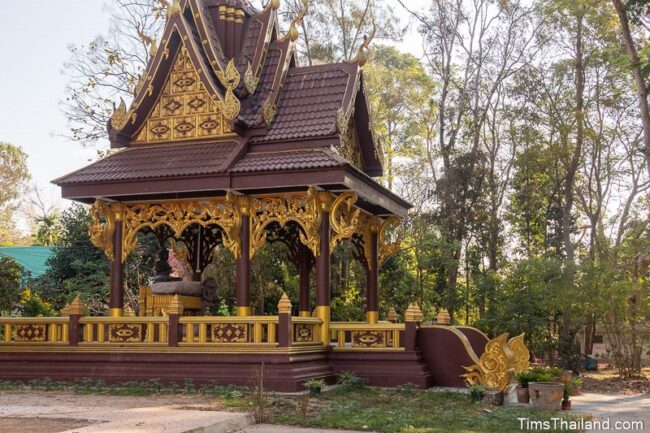
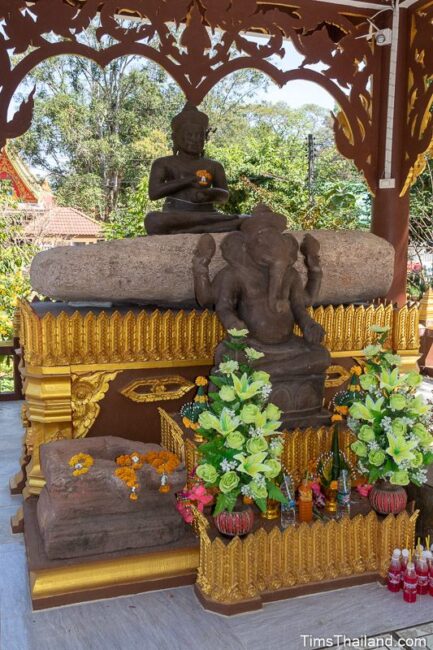
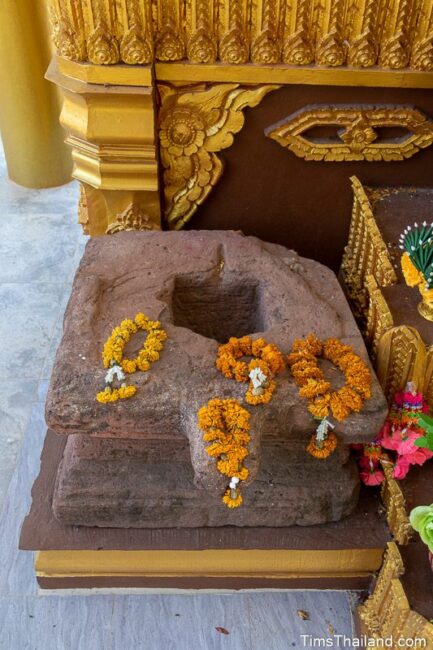
Though unrelated to the ruins, if you visit Wat Ku Prapha Chai you should have a look at the back of the temple where some women weave bamboo temple banners.
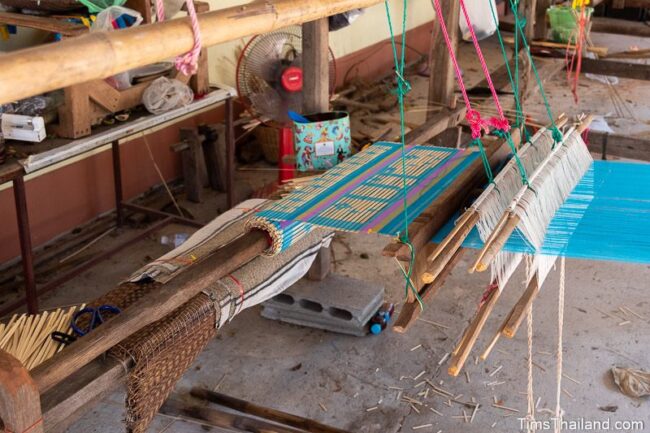
Details – Museum 9am-3pm Sat-Sun, free. If the museum is not open during these hours (which happens often) you can ask a monk for the key or, if you speak Thai, call 081-5467797. The temple is open daylight hours.
Location – Wat Ku Prapha Chai, Ban Na Kham Noi, Tambon Bua Yai, Amphoe Nam Phong, Khon Kaen Province
Other Names – Ku Ban Na Kham Noi (กู่บ้านนาคำน้อย), Ku Phra Bua Yai (กู่ประบัวใหญ่), Ku Phra Phachai, Ku Praphachai
Thanks to Luang Poh Thong for opening the museum and answering my questions.